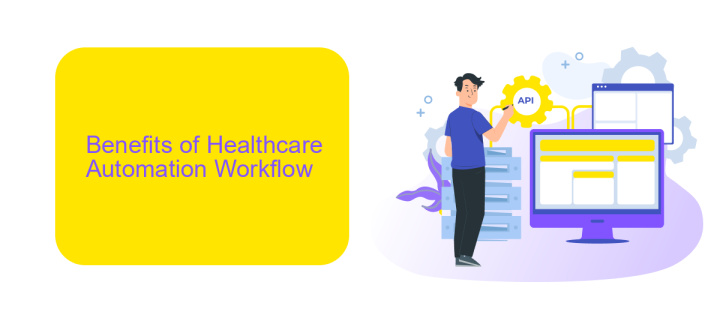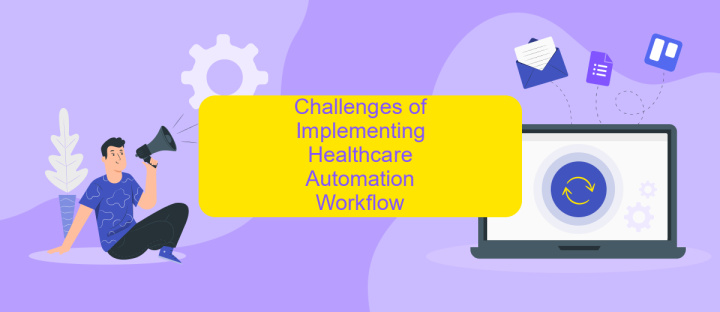Healthcare Automation Workflow
In the rapidly evolving landscape of healthcare, automation has emerged as a transformative force, streamlining workflows and enhancing efficiency. By integrating advanced technologies such as AI, machine learning, and robotics, healthcare providers can significantly reduce manual tasks, minimize errors, and improve patient outcomes. This article explores the pivotal role of automation in revolutionizing healthcare workflows and its potential to shape the future of medical services.
Introduction
Healthcare automation workflow is transforming the medical industry by streamlining processes, reducing human error, and enhancing patient care. Automation tools can handle repetitive tasks, allowing healthcare professionals to focus on more critical aspects of patient treatment and care. By integrating various systems and data sources, healthcare providers can achieve a seamless flow of information, leading to improved decision-making and operational efficiency.
- Streamlining administrative tasks such as patient scheduling and billing.
- Enhancing data accuracy and reducing manual entry errors.
- Improving patient engagement through automated reminders and follow-ups.
- Facilitating better coordination between different departments and healthcare providers.
One effective way to achieve these benefits is by using integration services like ApiX-Drive. This service allows healthcare organizations to connect various applications and automate data transfer between them, ensuring that all systems are up-to-date and synchronized. By leveraging tools like ApiX-Drive, healthcare providers can significantly reduce the time and effort required for manual data handling, thereby improving overall efficiency and patient satisfaction.
Benefits of Healthcare Automation Workflow

Healthcare automation workflow offers numerous benefits, significantly improving the efficiency and accuracy of medical processes. By automating repetitive tasks such as appointment scheduling, patient data entry, and billing, healthcare professionals can focus more on patient care and less on administrative duties. This not only reduces the likelihood of human error but also accelerates service delivery, enhancing patient satisfaction and overall healthcare quality.
Moreover, integrating various healthcare systems through platforms like ApiX-Drive can streamline data exchange between different departments and external partners. ApiX-Drive enables seamless integration and automation of workflows without the need for extensive technical knowledge, allowing healthcare providers to effortlessly connect their electronic health records (EHR) systems, lab results, and billing software. This holistic approach ensures that critical information is readily accessible, promoting better decision-making and improving patient outcomes.
Challenges of Implementing Healthcare Automation Workflow

Implementing healthcare automation workflows presents several challenges that can hinder the seamless integration of new technologies. These obstacles often require careful planning and strategic solutions to overcome.
- Data Security and Privacy: Ensuring the protection of sensitive patient data is paramount, and integrating automation tools can introduce new vulnerabilities.
- Interoperability: Different healthcare systems and software need to communicate effectively. Achieving seamless interoperability remains a significant hurdle.
- Cost: The initial investment for automation technologies can be substantial, making it difficult for smaller healthcare providers to adopt.
- Staff Training: Healthcare staff need adequate training to use new automated systems efficiently, which can be time-consuming and costly.
- Integration Complexity: Integrating multiple systems and workflows can be complex. Services like ApiX-Drive can help streamline these integrations, but they still require careful management.
Addressing these challenges requires a comprehensive approach that includes robust security measures, investment in training, and leveraging integration services like ApiX-Drive to ensure smooth and efficient implementation. By doing so, healthcare providers can fully realize the benefits of automation workflows while mitigating potential risks.
Best Practices for Implementing Healthcare Automation Workflow

Implementing healthcare automation workflows requires a strategic approach to ensure efficiency and effectiveness. Start by identifying the key areas where automation can bring the most value, such as patient scheduling, billing, and data management. Involving stakeholders in the planning process is crucial to align automation goals with organizational needs.
Next, choose the right tools and technologies that fit your healthcare facility's requirements. Ensure that the selected solutions are scalable and can integrate seamlessly with existing systems. For instance, ApiX-Drive can facilitate smooth integration between various healthcare applications, streamlining data flow and reducing manual intervention.
- Conduct thorough training sessions for staff to ensure they are comfortable with the new automated processes.
- Regularly monitor and evaluate the performance of the automation workflows to identify areas for improvement.
- Maintain clear communication channels to address any issues or concerns that may arise during implementation.
Finally, continuously update and optimize your automation workflows to adapt to changing healthcare needs and technological advancements. By following these best practices, healthcare providers can enhance operational efficiency, reduce errors, and improve patient care outcomes.
Future Trends in Healthcare Automation Workflow
The future of healthcare automation workflow is poised to be revolutionized by advancements in artificial intelligence and machine learning. These technologies will enable more precise diagnostics, personalized treatment plans, and predictive analytics, significantly improving patient outcomes. Additionally, the integration of Internet of Things (IoT) devices will allow for real-time monitoring of patient health, reducing the need for frequent hospital visits and enabling remote care management.
Another significant trend is the increasing use of automation tools like ApiX-Drive, which simplifies the integration of various healthcare systems and applications. This will streamline data sharing and communication between different healthcare providers, enhancing the overall efficiency of healthcare delivery. Furthermore, blockchain technology is expected to play a crucial role in securing patient data and ensuring transparency in medical records. These innovations will collectively transform the landscape of healthcare automation, making it more efficient, secure, and patient-centric.
FAQ
What is healthcare automation workflow?
How can healthcare automation improve patient care?
What are some common applications of automation in healthcare?
How do you integrate different healthcare systems to work together seamlessly?
What are the challenges of implementing automation in healthcare?
Do you want to achieve your goals in business, career and life faster and better? Do it with ApiX-Drive – a tool that will remove a significant part of the routine from workflows and free up additional time to achieve your goals. Test the capabilities of Apix-Drive for free – see for yourself the effectiveness of the tool.

